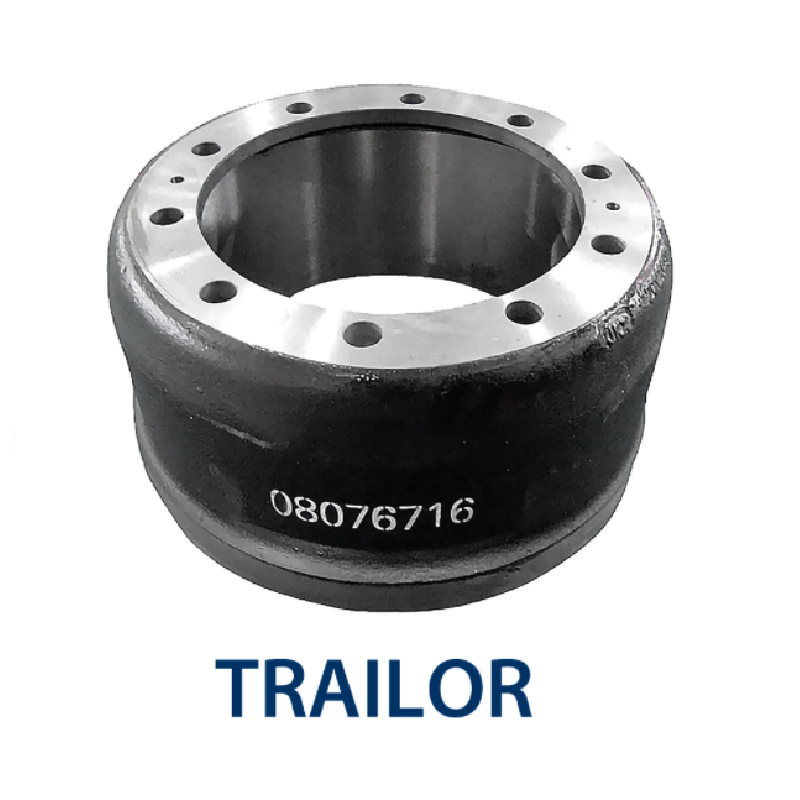Nov . 11, 2024 20:24 Back to list
brake drums and pads
Understanding Brake Drums and Pads Essential Components for Vehicle Safety
When it comes to vehicle safety, the braking system is arguably one of the most critical components. Among the various parts that contribute to this essential system, brake drums and pads play a vital role in ensuring effective stopping power. Understanding their functions, differences, and maintenance can significantly enhance vehicle safety and performance.
What are Brake Drums?
Brake drums are circular metal housings typically found in vehicles with drum brake systems. When the driver presses the brake pedal, hydraulic pressure is generated within the brake lines. This pressure forces the brake shoes inside the drum to expand outward, creating friction against the inner surface of the brake drum. This friction is what slows down or stops the vehicle.
Brake drums are commonly found in older vehicles and on the rear wheels of some newer models. They are typically made of cast iron or aluminum, designed to withstand the high temperatures generated during braking. While brake drums are durable, they can wear down over time, leading to reduced braking efficiency.
What are Brake Pads?
Brake pads are a key component of disc brake systems, which are much more common in modern vehicles. Unlike brake drums, which house the braking mechanism, brake pads are flat components that press against a rotating disc, known as the brake rotor, to create stopping power. When the driver applies the brakes, the caliper squeezes the brake pads against the rotor, and the resulting friction slows down the vehicle.
Brake pads are usually made from a composite material that includes a mix of metals, ceramics, and other substances to enhance performance. They come in three main types organic, semi-metallic, and ceramic, each offering different benefits in terms of noise, dust, and heat dissipation.
brake drums and pads

Differences Between Brake Drums and Pads
The primary difference between brake drums and brake pads lies in their designs and functions within the braking system. Brake drums are used in drum brake systems, and they create friction through the expansion of brake shoes against a cylindrical surface. In contrast, brake pads are used in disc brake systems, providing friction by clamping down on a flat rotor surface.
Moreover, disc brake systems with brake pads generally offer better performance and heat dissipation than drum brake systems. This is why disc brakes are more commonly used in modern vehicles, especially in the front axle where braking demands are typically higher.
Maintenance and Replacement
Both brake drums and brake pads need regular inspection and maintenance to ensure optimal braking performance. Drivers should pay attention to warning signs such as squeaking noises, vibrations during braking, or a decrease in braking effectiveness. These can indicate that brake components are worn and require replacement.
Replacing brake pads is generally easier and less costly than replacing brake drums. However, if a vehicle's brake drums show signs of deep grooves or warping, they may need to be resurfaced or replaced to maintain proper function.
Conclusion
In conclusion, understanding brake drums and pads is crucial for vehicle owners who want to ensure their safety on the road. Regular maintenance and timely replacement of these components can help enhance braking performance and prolong the lifespan of the braking system. By prioritizing the health of your braking components, you can contribute to safer driving conditions for yourself and others on the road.
-
HINO Industrial Solutions - ¡Ң���ຽ��е��������˾ | Advanced Technology&Reliability
NewsJul.13,2025
-
HINO Industrial Efficiency-Jiangsu Hino Industrial|Productivity Optimization&Cost Reduction
NewsJul.12,2025
-
HINO-¡Ң���ຽ��е��������˾|Advanced Industrial Solutions&Energy Efficiency
NewsJul.12,2025
-
Premium Brake Drum Iveco – Durable Drum Brake Drum & Brake Shoe Solutions
NewsJul.08,2025
-
High-Performance Brake Drum Liza for Enhanced Safety Reliable Drum Brake Drum & Brake Shoe Solutions
NewsJul.08,2025
-
High-Quality Brake Drum MAZ – Durable Drum Brake Drum & Brake Drum and Brake Shoe for Optimal Performance
NewsJul.07,2025
